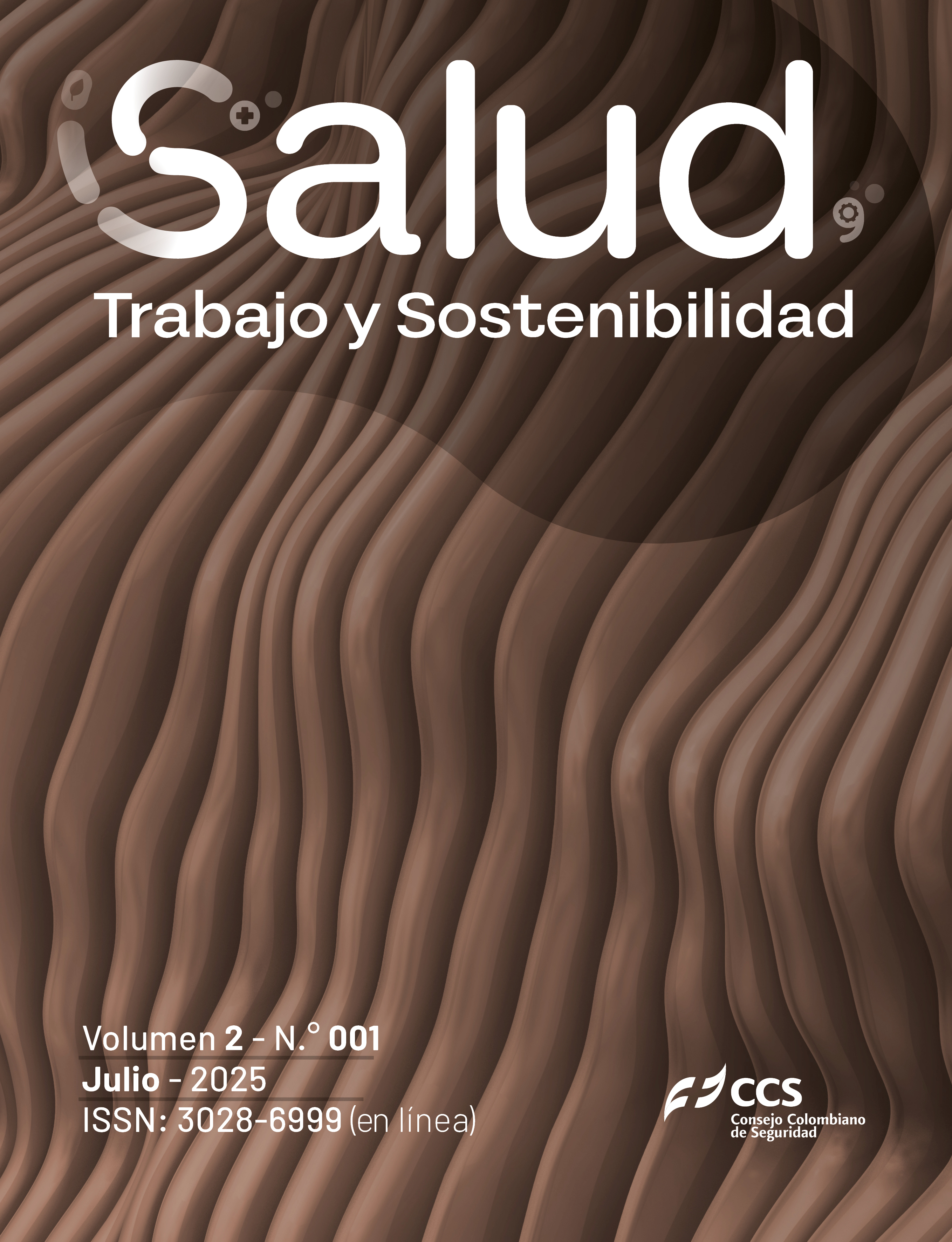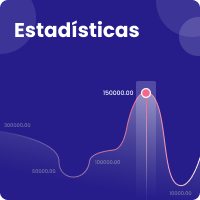Condicionantes de la exposición ocupacional a plaguicidas en agricultores: scoping review
DOI:
https://doi.org/10.63434/30286999.3Palabras clave:
Exposición profesional, plaguicidas, factores socioeconómicos, Conocimientos, Actitudes y Práctica en SaludResumen
El aumento constante en la producción y uso de plaguicidas ha tenido repercusiones significativas en la salud de los trabajadores agrícolas, especialmente en los países en desarrollo, asociado a prácticas y actitudes poco seguras y a la falta de conocimiento en el manejo de estos productos químicos.
Objetivo: sintetizar la evidencia existente sobre los factores determinantes de la exposición ocupacional a plaguicidas para identificar su impacto en la salud y seguridad de los agricultores.
Materiales y métodos: se realizó una búsqueda de literatura tipo scoping, siguiendo la guía metodológica JBI y el protocolo PRISMA ScR. Para la selección de los estudios se consultaron las bases de datos Bireme, Pubmed y Embase, de donde se extrajeron 1723 publicaciones científicas indexadas, publicadas entre los años 2020 y 2023. Estas fueron filtradas a través de un proceso semiautomático apoyado en el software Rayyan®, realizando síntesis cualitativa de la evidencia y, de esta manera, se excluyeron un total de 1198.
Resultados: en total fueron incluidos 21 artículos en los cuales se identificó desconocimiento en temas como toxicidad del producto, efectos en la salud o en la interpretación de etiquetas de seguridad. Los agricultores con algún nivel de educación demostraron mejores prácticas y selección de plaguicidas menos tóxicos. Se demostró una baja tendencia en el uso de los elementos de protección personal, siendo las gafas y los guantes los menos usados. La sintomatología comúnmente reportada fue cefalea, mareos y problemas visuales y respiratorios, reconocidos como habituales entre los trabajadores.
Conclusiones: factores como la actitud, el conocimiento y las prácticas en el manejo de plaguicidas no solo influyen en la seguridad de los trabajadores, sino que también tienen un impacto directo en su salud y en el medio ambiente.
Biografía del autor/a
Diana Carolina Sánchez-Calderón, Universidad El Bosque (Colombia)
Magíster en Seguridad y Salud en el Trabajo.
Viviana Ginneth Bobadilla-Narváez, Universidad El Bosque (Colombia)
Especialista en Seguridad y Salud en el Trabajo
Tatiana Andrea González-Russi, Universidad El Bosque (Colombia)
Especialista en Seguridad y Salud en el Trabajo.
Luisa Carolina Hernández-Rodríguez, Universidad El Bosque (Colombia)
Especialista en Seguridad y Salud en el Trabajo.
Referencias bibliográficas
1. Forté CA, Colacino J, Polemi K, Guytingco A, Peraino NJ, Jindaphong S, et al. Pesticide exposure and adverse health effects associated with farmwork in Northern Thailand. J Occup Health [Internet]. 2021 [cited 2025 Jun 4]; 63(1). https://doi.org/10.1002/1348-9585.12222.
2. Bagheri A, Emami N, Damalas CA. Farmers’ behavior towards safe pesticide handling: An analysis with the theory of planned behavior. Science of the Total Environment [Internet]. 2021 [cited 2025 Jun 4]; 751. https://doi.org/10.1016/j.scitotenv.2020.141709
3. Zineb BK, Fagroud M, Karmoudi Y El, Ezrari S, Berni I, De Broe M, et al. Farmers’ knowledge, attitudes, and perceptions regarding carcinogenic pesticides in fez meknes region (Morocco). Int J Environ Res Public Health [Internet]. 2021 [cited 2025 Jun 4];18(20). https://doi.org/10.3390/ijerph18201087934682625/
4. Organización Panamericana de la Salud. Situación epidemiológica de las intoxicaciones agudas por plaguicidas en el Istmo Centroamericano, 1992-2000. 2002 [cited 2025 Jun 4]; Available from: https://iris.paho.org/handle/10665.2/40228
5. Kaur H, Garg H. Pesticides: environmental impacts and management strategies. In: pesticides - toxic aspects [Internet]. InTech; 2014 [cited 2025 Jun 4]. https://doi.org/10.5772/57399.
6. Mueller W, Atuhaire A, Mubeezi R, van den Brenk I, Kromhout H, Basinas I, et al. Evaluation of two-year recall of selfreported pesticide exposure among Ugandan smallholder farmers. Int J Hyg Environ Health [Internet]. 2022 [cited 2025 Jun 4];240. https://doi.org/10.1016/j.ijheh.2021.113911
7. Febriana A. Pesticide management knowledge, attitude and practices in Indonesian vegetable farmers with occupational skin disease in Magelang, Central Java [Internet]. Journal of Pakistan Association of Dermatologists. 2022 [cited 2025 Jun 4]; 32(3): 517-525. Available from: https://www.researchgate.net/publication/385700722_Pesticide_management_knowledge_attitude_and_practices_in_Indonesian_vegetable_farmers_with_Occupational_Skin_Disease_in_Magelang_Central_Java
8. García-Pineda y BVL. Conocimientos, actitudes y prácticas sobre el uso de plaguicidas por agricultores en una zona rural de Copán Ruinas, Honduras, año 2019. 2022; 35(2). https://doi.org/10.18273/revmed.v35n2-2022010
9. Monger A, Mahat K, Dorjee, Om N, Mongar P, Dorji T, et al. Assessment of exposure to pesticides and the knowledge, attitude and practice among farmers of western Bhutan. PLoS One [Internet]. 2023 [cited 2025 Jun 4]; 18. https://doi.org/10.1371/journal.pone.0286348
10. Lari S, Yamagani P, Pandiyan A, Vanka J, Naidu M, Senthil Kumar B, et al. The impact of the use of personalprotective-equipment on the minimization of effects of exposure to pesticides among farm-workers in India. Front Public Health [Internet]. 2023 [cited 2025 Jun 4];11. https://doi.org/10.3389/fpubh.2023.1075448
11. Mehmood Y, Arshad M, Mahmood N, Kächele H, Kong R. Occupational hazards, health costs, and pesticide handling practices among vegetable growers in Pakistan. Environ Res. 2021 Sep 1;200. https://doi.org/10.1016/j.envres.2021.111340
12. Hughes D, Thongkum W, Tudpor K, Turnbull N, Yukalang N, Sychareun V, et al. Pesticides use and health impacts on farmers in Thailand, Vietnam, and Lao pdr: protocol for a survey of knowledge, behaviours and blood acetyl cholinesterase concentrations. PLoS One [Internet]. 2021 [cited 2025 Jun 4];16. https://doi.org/10.1371/journal.pone.0258134.
13. Kangkhetkron T, Juntarawijit C. Factors influencing practice of pesticide use and acute health symptoms among farmers in Nakhon Sawan, Thailand. Int J Environ Res Public Health [Internet]. 2021 [cited 2025 Jun 4];18(16). https://doi.org/10.3390/ijerph18168803
14. Tessema RA, Nagy K, Ádám B. Pesticide use, perceived health risks and management in Ethiopia and in Hungary: A comparative analysis. Int J Environ Res Public Health [Internet]. 2021 [cited 2025 Jun 4];18(19). https://doi.org/10.3390/ijerph181910431
15. Kafle S, Vaidya A, Pradhan B, Jørs E, Onta S. Factors associated with practice of chemical pesticide use and acute poisoning experienced by farmers in Chitwan district, Nepal. Int J Environ Res Public Health [Internet]. 2021 [cited 2025 Jun 4];18(8). https://doi.org/10.3390/ijerph18084194
16. Thammachai A, Sapbamrer R, Rohitrattana J, Tongprasert S, Hongsibsong S, Wangsan K. Differences in knowledge, awareness, practice, and health symptoms in farmers who applied organophosphates and pyrethroids on farms. Front Public Health [Internet]. 2022 [cited 2025 Jun 4];10. https://doi.org/10.3389/fpubh.2022.802810
17. Moda HM, Anang DM, Moses N, Manjo FM, Joshua VI, Christopher N, et al. Pesticide safety awareness among rural farmers in Dadinkowa, Gombe State, Nigeria. Int J Environ Res Public Health [Internet]. 2022 Nov 1 [cited 2025 Jun 4];19(21). https://doi.org/10.3390/ijerph192113728
18. Sombatsawat E, Siriwong W, Puangthongthub S. Risk factors, erythrocyte acetylcholinesterase inhibition, and self-reported symptoms of pesticide intoxication among farmers in Thailand: a cross-sectional study. Roczniki Panstwowego Zakladu Higieny / Annals of the National Institute of Hygiene [Internet]. 2023 [cited 2025 Jun 4];74(1):113–20. https://doi.org/10.32394/rpzh.2023.0249
19. Ichihara G, Raj Onta S, Olisah C, Jonnalagadda PR. Assessment of dermal exposure to pesticides among farmers using dosimeter and hand washing methods [Internet]. 2022 [cited 2025 Jun 4]. https://doi.org/10.3389/fpubh.2022.957774
20. Kobashi Y, Haque SE, Nishikawa Y, Morita T, Nagami H, Sakisaka K, et al. The increase in frequency of protective behavior against pesticide poisoning in Narail, Bangladesh through use of an easy paper checklist; an interventional study. Int J Environ Res Public Health [Internet]. 2021 [cited 2025 Jun 4];18(17). https://doi.org/10.3390/ijerph18179349
21. Liem JF, Mansyur M, Soemarko DS, Kekalih A, Subekti I, Suyatna FD, et al. Cumulative exposure characteristics of vegetable farmers exposed to chlorpyrifos in Central Java – Indonesia; a cross-sectional study. BMC Public Health [Internet]. 2021 [cited 2025 Jun 4];21(1). https://doi.org/10.1186/s12889-021-11161-5
22. Goeb J, Lupi F. Showing pesticides’ true colors: The effects of a farmer-to-farmer training program on pesticide knowledge. J Environ Manage [Internet]. 2021 [cited 2025 Jun 4];279. https://doi.org/10.1016/j.jenvman.2020.111821
23. Forté CA, Colacino J, Polemi K, Guytingco A, Peraino NJ, Jindaphong S, et al. Pesticide exposure and adverse health effects associated with farmwork in Northern Thailand. J Occup Health [Internet]. 2021 [cited 2025 Jun 4];63(1). https://doi.org/10.1002/1348-9585.12222
24. Galli A, Winkler MS, Doanthu T, Fuhrimann S, Huynh T, Rahn E, et al. Assessment of pesticide safety knowledge and practices in Vietnam: a cross-sectional study of smallholder farmers in the Mekong Delta. J Occup Environ Hyg [Internet]. 2022 [cited 2025 Jun 4]; 19(9):509-23. https://doi.org/10.1080/15459624.2022.2100403
25. Kangkhetkron T, Juntarawijit C. Factors influencing practice of pesticide use and acute health symptoms among farmers in Nakhon Sawan, Thailand. Int J Environ Res Public Health. 2021 Aug 2;18(16). https://doi.org/10.3390/ijerph18168803
26. Sapbamrer R, Hongsibsong S, Naksata M, Naksata W. Insecticide filtration efficiency of respiratory protective equipment commonly worn by farmers in Thailand. Int J Environ Res Public Health [Internet]. 2021 [cited 2025 Jun 4];18(5):1–16. https://doi.org/10.3390/ijerph18052624.
27. Alves B/. O/. DeCS. Concepto capacitación profesional DeCS [Internet]. [cited 2025 Jun 4]. Available from: https://decs.bvsalud.org/es/ths/resource/?id=51554&filter=ths_termall&q=capacitacion
28. Yousaf HM, Bakhsh K, Masood A. Nexus of pesticide exposure, personal preventive measures and farm workers’ health safety in cotton production. Human and Ecological Risk Assessment. 2023; 29(5–6):948–65. https://doi.org/10.1080/10807039.2023.2218940
29. Domingues MR, Márcia ;, Bernardi R, Yurie E, Ono S, Ono MA. Agrotóxicos: Risco à saúde do trabalhador rural pesticides: risk to rural worker health [Internet]. 2004 [cited 2025 Jun 4]; 25 (1):45-53. https://doi.org/10.5433/1679-0367.2004v25n1p45
30. Halbleib ML, Dinsdale B. Farmer-centered pesticide risk reduction education in Senegal: a novel, participatory approach. journal of international agricultural and extension education [Internet]. 2023 [cited 2025 Jun 4]; 30(1):7–20. https://doi.org/10.4148/2831-5960.1127
31. Ortíz Ana, Jordán Juan, Agredal Miriam. Gamificación en educación, una panorámica sobre el estado de la cuestión. Educação e Pesquisa [Internet]. 2018 [cited 2024 Jan 25];44. https://doi.org/10.1590/S1678-4634201844173773.
32. Caponetto I, Earp J, Ott M. Gamification and Education: a Literature Review [Internet]. 2014. Available from: https://www.researchgate.net/publication/266515512
33. Boggs K, Madhok M, Ahluwalia T. SMALLgroups Development and design of a pediatric case-based virtual escape room on organophosphate toxicity empty line calibri size 12. 2024. 319(3): 36-62. https://doi.org/10.21980/J8DH1V
34. Bauer E, Ogg C. Pest private eye: Using an interactive role-playing video game to teach about pests and Integrated Pest Management. J Ext [Internet]. 2011 [cited 2025 Jun 4];49(1). http://doi.org/10.34068/joe.49.01.15
35. Galvin K, Krenz J, Harrington M, Palmández P, Fenske RA. Practical solutions for pesticide safety: a farm and research team participatory model. J Agromedicine [Internet]. 2016 [cited 2025 Jun 4];21(1):113–22. https://doi.org/10.1080/1059924X.2015.1107519.
36. Helitzer DL, Hathorn G, Benally J, Ortega C. Culturally relevant model program to prevent and reduce agricultural injuries. Journal of agricultural safety and health [Internet] . 2014 [cited 2025 Jun 4]; 20(3): 175-98. https://doi.org/10.13031/jash.20.10333.
37. Kohsuwan K, Intayoung U, Khacha-ananda S, Sapbamrer R, Koonrungsesomboon N, Techatoei S, et al. Urinary glyphosate kinetics after occupational exposure. Int J Hyg Environ Health [Internet]. 2022 [cited 2025 Jun 4];245. https://doi.org/10.1016/j.ijheh.2022.114021
38. LePrevost CE, Storm JF, Asuaje CR, Cope WG. The pesticides and farmworker health toolkit: an innovative model for developing an evidence-informed program for a low-literacy, latino immigrant audience. J Ext [Internet]. 2014 [cited 2025 Jun 4];52(3). https://doi.org/10.34068/joe.52.03.12
39. Unión Europea. Normas y apoyo financiero a los planes estratégicos de la PAC. EUR-Lex [Internet]. 2023 [cited 2024 Feb 3]. Available from: https://eur-lex.europa.eu/ES/legal-content/summary/rules-and-financial-support-for-cap-strategic-plans.html?fromSummary=03
40. Unión Europea. Agricultura: comprender las políticas de la Unión Europea. 2017; Disponible en: https://european-union.europa.eu/priorities-and-actions/actions-topic/agriculture_es
Cómo citar
Descargas
Publicado
Número
Sección
Licencia
Derechos de autor 2025 Salud, Trabajo y Sostenibilidad (Consejo Colombiano de Seguridad)

Esta obra está bajo una licencia internacional Creative Commons Atribución 4.0.
2025-04-27 01:22:07
| Estadísticas de artículo | |
|---|---|
| Vistas de resúmenes | |
| Vistas de PDF | |
| Descargas de PDF | |
| Vistas de HTML | |
| Otras vistas | |









